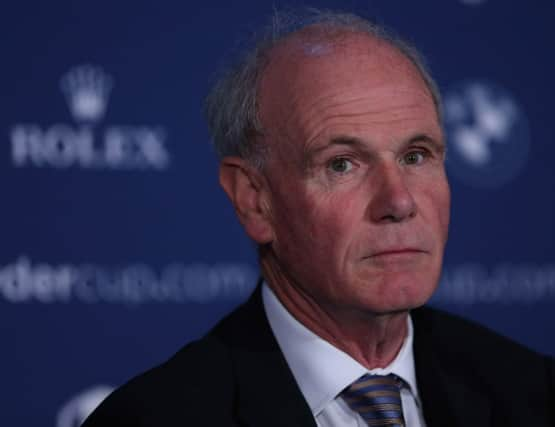PGA chief: ‘Unofficial’ Tours are road to nowhere


It’s not just at the top of the tree, where the European Tour, for instance, has spread its wings far and wide, that the face of the game has changed beyond recognition over the past 20 years.
In the days when Colin Brooks, a former Scottish Amateur champion and Northern Open winner, was one of its top dogs, the Satellite Tour was mainly a British affair.
Advertisement
Hide AdAdvertisement
Hide AdNow known as the Challenge Tour, it gets around the globe as much as its big brother, for which it is its only gateway along with the Qualifying School.
Below the Challenge Tour now are no less than five “development” circuits, which include the PGA EuroPro Tour, the Alps Tour and the Pro Golf Tour, which was known as the EPD Tour when the two-times Scottish Amateur champion David Law used it to cut his teeth in the paid ranks.
Delve even deeper and you’ll find a whole host of other circuits, which, by sheer definition, can only be described as being the fourth tier in professional golf on this side of the Atlantic. In Spain and Portugal, there are Jamega and Evolve Tours. Closer to home, too, new circuits keep popping up.
For some, they are useful for getting rid of rust. Jamie McLeary and Duncan Stewart, for instance, played in one of the Portuguese ones recently in preparation for the start of the new Challenge Tour campaign. According to Jones, though, they are not really beneficial in the grand scheme of things.
“There are now too many unofficial Tours,” said the Scot. “The Tartan Tour and other circuits in the PGA regions are meant for guys who live and work in their countries. If you are looking to be a full-time player, you should be on the Challenge Tour or one of the development circuits, of which there are now five, as they are a gateway to the Challenge Tour. That feeds through as a promotion system.
“Unfortunately, there’s a limit in terms of how many people can play in these events, so that’s led to other circuits popping up, many sadly that are being run by pros who’ve not been good enough to make the grade themselves as players.
“Winning on those circuits means nothing because it has no connection to anything. Yes, it gives playing experience but if someone is good enough then they’d be on one of the development circuits.”
The PGA EuroPro Tour has been in existence since 2002, when Paul McKechnie topped the inaugural money-list. Scott Jamieson also achieved that feat in 2009 on his way to becoming a European Tour player, one of several on that circuit to have used that particular development tour as a stepping stone.
Advertisement
Hide AdAdvertisement
Hide AdSouth African pair Louis Oosthuizen and Charl Schwartzel were both PGA EuroPro Tour members before they went on to become major champions, as were three Ryder Cup players, Belgian Nicolas Colsaerts, England’s Ross Fisher and Welshman Jamie Donaldson, as they found their feet as professionals.
“The PGA EuroPro Tour, funnily enough, sprung out of a situation with Andrew Coltart (one of Scotland’s most-promising players at the time) in the mid-’80s,” recalled Jones, who cut his teeth in golf administration as secretary of the PGA in Scotland before moving into the organisation’s big seat at The Belfry.
“He came to see me at Glenbervie, saying that he wanted to be a pro but didn’t want to work in a shop. He asked what he could do other than join the PGA training programme and I said, ‘nothing’. The Swedes had a circuit on the go then and I said he should go there to get his career started.
“I always thought it was wrong that the UK couldn’t offer players the opportunity he was looking for and, after I moved to The Belfry, we started the MasterCard Tour before Barry Hearn (chairman of the Romford-based Matchroom empire that promotes the circuit) came on board with the EuroPro Tour.
“We probably put £100,000-£150,000 into the EuroPro each year and Barry has written some good cheques for it as well when there’s been a shortfall in sponsorship. He’s never been short in putting his money in as he believes in giving youngsters a chance.”
FOLLOW US
SCOTSMAN TABLET AND MOBILE APPS